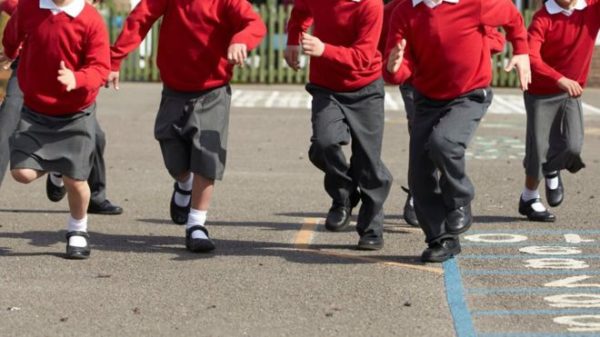The team fighting to remove online child abuse images
January 16, 2017 · By Liz Jackson, BBC News for www.bbc.com

The IWF believes its work has helped make many children safe
Twenty years after the founding of the Internet Watch Foundation, the organisation has removed more than 280,000 web pages showing child sexual abuse. But what is it like for those doing the work?
“We see far worse in one day than most people will ever see in a lifetime,” says Peter, one of a team of 12 analysts.
Having spent 23 years in military intelligence he was used to seeing shocking images from conflict zones, but nothing prepared him for dealing with child abuse images.
“Knowing that I’m doing something that makes a difference and helps these children is the driving force that makes you think, let’s just get the job done,” Peter says.
The IWF team split their time between handling hundreds of reports from members of the public, and just trawling the internet to find hundreds more images each day.
These are then blocked as part of its Image Hash List initiative, which aims to give each picture a unique fingerprint to help permanently remove it from the internet.
Because of the nature of their work, the analysts BBC News have spoken to wish to remain anonymous.
How do they cope?
“I try to get the details as quickly as possible and try not to dwell on it,” says Darcy, a former crime scene analyst who has been in the job for three years.
She thinks it is easier if she knows she will be spending the whole day searching for new images as it
helps her to “mentally prepare”.
The charity’s mandatory 10-minute hourly break policy and free counselling also help, she adds.
Much of the content they see is extreme, graphic and harrowing.
For example, of roughly 125,500 confirmed child sex abuse images in the IWF’s Image Hash List, two thirds showed the rape or sexual torture of children.
Some 3,000 images were assessed as showing babies and toddlers under two years of age.
When viewing videos, Darcy tries to watch with the sound off.
“Unless you have to, to listen to what the child or the offender is saying is difficult and I also try not to watch them from start to finish – I’ll just click through.”

The IWF team have helped remove more than 280,000 abuse images from the internet
Her colleague Peter says: “You have to have a certain mentality to go through it, and the ability to let go of this stuff.”
But that is not always easy to do.
“There does come a point where you have seen enough – I just get up and walk away from my desk,” he says.
“Everyone copes with it in their own way, but I go for a walk around the pond and garden area outside the building and think about nice things for a while.
“I have a motorbike and when I leave work, I spend 30 minutes on the ride getting rid of some things in my head so I can process it.”
The IWF: 20 years
At 11:21 BST on 21 October 1996, the IWF received its first report over the telephone, in a small room in a Victorian townhouse in a village near Cambridge.
Two decades on, a list of the charity’s members includes many major internet service providers and technology giants such as Google, Facebook, Sky and BT.
The IWF’s analysts have helped to assess a total of 699,403 reports, with 281,781 confirmed to have led to identification of illegal child sexual abuse imagery.
The analysts have also logged 125,000 digital fingerprints or hashes – a unique code generated from image data – for the IWF’s Image Hash List aimed at blocking content.
Every four minutes, analysts create a hash for new images in the hash list.
It is perhaps difficult to understand what motivates people like Darcy and Peter to spend their careers surrounded by disturbing images of child abuse.
But Darcy says: “I didn’t realise how much impact I could have for a victim. Liaising with the police’s CEOP centre and hearing stories about rescues is great.”
Success stories
Peter explains: “Soon after I joined the IWF, I identified an image that looked new. The image was of a young schoolgirl in her bedroom.
“I noticed the decor and her clothing, so the team all started researching it and trying to find out where she was from.
“We reported it and within a few days the police had called and they had found her and rescued her and she was safe.
“I can’t tell you how great we all felt when we got the news.”
Darcy says: “It’s about knowing what to look for – clothing, an accent and a vehicle in the background can all help rescue children.
“One time I was watching a video and caught sight of electrical sockets in a hotel room that looked totally English.
“I could hear a radio station in the background so I did a bit of research into it and tracked it down.
“I then reported it to the police CEOP team and they informed me the child had been rescued.”






